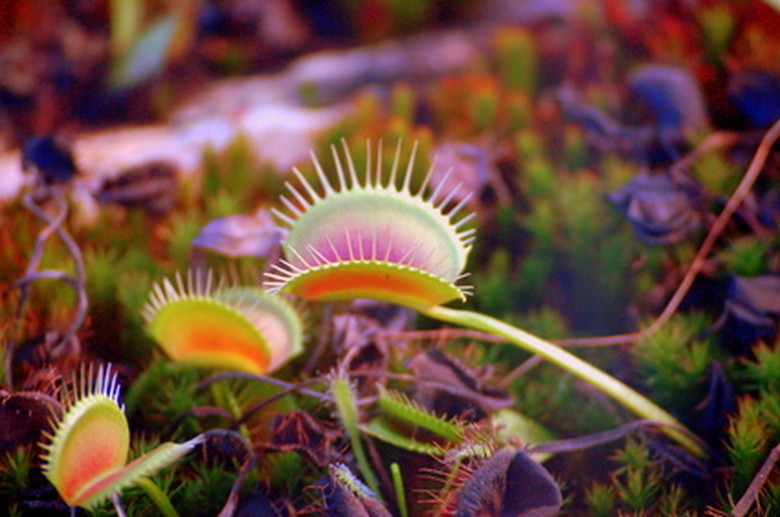Stages Of Growth For The Venus Flytrap
The Venus flytrap (Dionaea muscipula) is one of the most easily recognized carnivorous plants in the world. The normal growth of this plant centers around the different seasons, with certain distinct processes, including germination, blooming and dormancy, occurring during particular times of the year. The Venus flytrap is a perennial plant that repeats the stages of growth every year for the duration of its lifetime.
Germination
Germination begins once a seed is planted in the spring. As with most carnivorous plants, germination is a slow process, and it often takes between two to three weeks for the seeds to begin to grow. Seeds do not germinate simultaneously, and after the first few seeds start, it can take several more weeks for seeds planted at the same time to finish the process, according to the Flytrap Ranch website. After the seed has germinated, it will produce a sprout, complete with minuscule, fully-functioning traps. For the first two years of life, the size of the plant remains less than 1 inch in size, according to the International Carnivorous Plant Society. As the plant grows, it becomes longer and thinner, pushing through the soil and raising its traps into the air.
- The Venus flytrap (Dionaea muscipula) is one of the most easily recognized carnivorous plants in the world.
- The Venus flytrap is a perennial plant that repeats the stages of growth every year for the duration of its lifetime.
Blooming
Although some plants may reach flowering size in a year, it typically takes between two to four years for flowering to occur. During the warmer summer months, the plant begins to bloom, producing small white flowers. At this point, the traps themselves will be about 1/2 inch in length and have the ability to capture insects, such as flies, ants and bees. In the third year of life, the plant grows larger, typically to a height of about 2 inches.
Reproduction
The Venus flytrap reaches full maturity at any time between the fourth and sixth year of its life cycle. The plant's flowers, which are found at the very top of the stalk, allow for successful pollination without insects becoming trapped. The flowers produce dozens of tiny black seeds, according to Botany.org. Once the seeds have been successfully pollinated, it takes approximately four to six weeks for them to mature.
- Although some plants may reach flowering size in a year, it typically takes between two to four years for flowering to occur.
- At this point, the traps themselves will be about 1/2 inch in length and have the ability to capture insects, such as flies, ants and bees.
Dormancy
In order to survive, every winter the Venus flytrap enters a dormancy period for three to five months, according to the website FlyTrapCare. Dormancy is triggered by a combination of colder weather and less light. Although it can initially appear that the plant is dying, the Venus flytrap is actually preparing for an extended period of rest. The majority of the leaves turn black, and production of both leaves and traps becomes slower, eventually ceasing altogether. In the spring, when the temperatures rise and there is more sunlight, the plant comes out of dormancy and begins the cycle once again. Healthy Venus flytrap plants live for an average of seven years.
